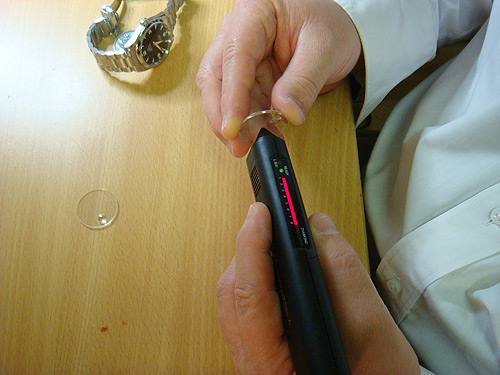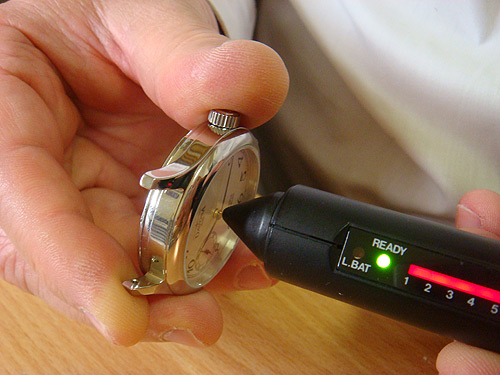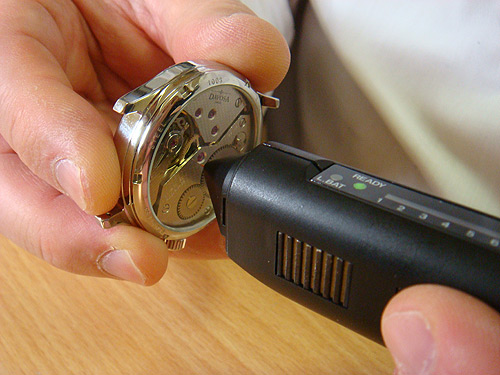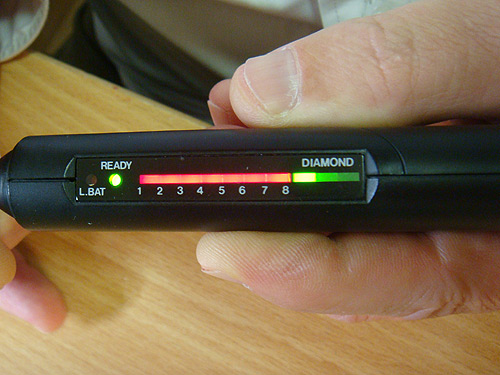We are often asked how one can tell the difference between sapphire crystal and mineral glass. Various 'internet experts' offer a variety of crystal tests - from tapping, heating, touching - even licking (yuck!)- to what is known as 'the definite' test: scratching the watch crystal with a hard and sharpen nail.
Of course, there is a simple and PROPER way to tell what the crystal is made of: with the help of a diamond tester, the result will be known in a second. A hand-held diamond tester checks the thermal conductivity and the result is displayed on a scale.

Bad news: most likely, you won't have one in your tool box, but the good news is: your local jeweller most likely will. The diamond tester is commonly used in the jewellery trade. If you ask your jeweller to perform a crystal test, he would surely be happy to help. (While there, place an order for a 3Ct diamond ring, that would make his day :)
The test is a straight forward one. Like natural sapphire, a synthetic sapphire watch crystal will 'excite' the LED meter to the very last red bar, just under the "diamond" level. Mineral glass will result in no lit LED lights. And it is as simple as that!
Contrary to commonly held opinion, that even a hard synthetic sapphire crystal like the one fitted on a Rolex watch CAN be scratched. If you are still tempted to go for a sharp nail test, do it in the privacy of your home. There is nothing more embarrassing than scratching your brand new Submariner in front of a dozen of your office mates. Unless you want to be remembered as "the watch guy".
Photos below show the reading on sapphire crystal front and mineral glass case back. The last one is diamond test.



No comments:
Post a Comment